Russia, the world's largest country, obviously defies a "brief description," as it covers 9 time zones, all climate zones except tropical, with land that stretches almost halfway around the planet and a population of 138,082,178. 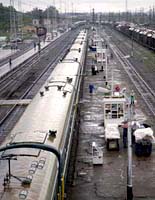 In fact, by jet from Moscow, it takes about eight hours to reach Vladivostok on the Pacific Oceancoast. If you were to take the trip on the Trans-Siberian Railroad, you can count on your journey taking at least 4 days minimum. Russia has over 1,000 major cities, 16 of which have a metro population of more than one million; the most populated cities are Moscow, St. Petersburg, Novosibirsk, Yekaterinburg and Nizhny Novgorod. Moscow, the capital, with over 12 million (metro) residents, is the country's major economic and political center - the seat of the President, the government and the State Duma. The Russian landmass west of the Ural Mountains (shown above in a lighter shade of grey) is referred to as European Russia by most educational atlases and geography experts. It is not a separate country, but rather called that because of its political, cultural and geographical blendings with Europe. A Brief History of Russia
In fact, by jet from Moscow, it takes about eight hours to reach Vladivostok on the Pacific Oceancoast. If you were to take the trip on the Trans-Siberian Railroad, you can count on your journey taking at least 4 days minimum. Russia has over 1,000 major cities, 16 of which have a metro population of more than one million; the most populated cities are Moscow, St. Petersburg, Novosibirsk, Yekaterinburg and Nizhny Novgorod. Moscow, the capital, with over 12 million (metro) residents, is the country's major economic and political center - the seat of the President, the government and the State Duma. The Russian landmass west of the Ural Mountains (shown above in a lighter shade of grey) is referred to as European Russia by most educational atlases and geography experts. It is not a separate country, but rather called that because of its political, cultural and geographical blendings with Europe. A Brief History of Russia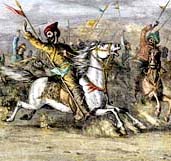 Historically, Russia was occupied by Mongols, and the likes, for centuries. Early Russian ancestors belonged to Slavic tribes, and by the mid-9th century vikings arrived. The vikings moved across the vast landscape, utilizing the many waterways, and maintained trade along the way. Eventually, the Norse peoples merged with the Slavic population, absorbing Greek Christian influences as well, and then, in the mid-1200s the Mongols arrived. The impact of the Mongol invasion, at best, was uneven - older cities never completely recovered from the destruction, while the new cities of Moscow, Tver and Nizhny Novgorod began to fight for power amidst the Mongol-dominated land.
Historically, Russia was occupied by Mongols, and the likes, for centuries. Early Russian ancestors belonged to Slavic tribes, and by the mid-9th century vikings arrived. The vikings moved across the vast landscape, utilizing the many waterways, and maintained trade along the way. Eventually, the Norse peoples merged with the Slavic population, absorbing Greek Christian influences as well, and then, in the mid-1200s the Mongols arrived. The impact of the Mongol invasion, at best, was uneven - older cities never completely recovered from the destruction, while the new cities of Moscow, Tver and Nizhny Novgorod began to fight for power amidst the Mongol-dominated land. 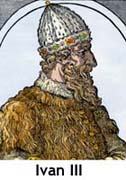 The Mongols began to falter by the middle of the 14th century, and, upon their eventual collapse, Moscow's leadership began to expand outward. The influence of the Mongols in terms of military tactics and transportation remained with the Russian peoples, and in the 15th century Ivan III (Ivan the Great) organized the foundation for a Russian national state. Ivan IV emerged in 1547 as a powerful, autocratic ruler - giving himself the title of "Tsar" - he was known for his ruthlessness, and strengthened the position of the monarch to an unparalleled degree.Cohorts of Ivan IV executed a series of bloody battles, and, coupled with additional epidemics and poor harvests plaguing the country, Russia became severely weakened in the late 1500s.
Following the death of Ivan IV, troubled times prevailed across Russia, as extremely cold summers led to a famine and civil wars broke out across the country. Further adding to their misfortune, on September 21, 1610 Poland invaded Moscow, savagely repressing riots, and setting the city on fire.Romanov InfluenceA volunteer army, led by Kuzma Minin and Dmitry Pozharsky, pushed out the Polish forces in 1612, and the following year Michael Romanov was elected to the throne (thus beginning the 300 year control of the Romanov family). Czar Peter I brought autocracy into Russia, and really began the transformation of the Russian Empire. After the reign of Queen Catherine II, it emerged as an influential and powerful Europeanforce.
The Mongols began to falter by the middle of the 14th century, and, upon their eventual collapse, Moscow's leadership began to expand outward. The influence of the Mongols in terms of military tactics and transportation remained with the Russian peoples, and in the 15th century Ivan III (Ivan the Great) organized the foundation for a Russian national state. Ivan IV emerged in 1547 as a powerful, autocratic ruler - giving himself the title of "Tsar" - he was known for his ruthlessness, and strengthened the position of the monarch to an unparalleled degree.Cohorts of Ivan IV executed a series of bloody battles, and, coupled with additional epidemics and poor harvests plaguing the country, Russia became severely weakened in the late 1500s.
Following the death of Ivan IV, troubled times prevailed across Russia, as extremely cold summers led to a famine and civil wars broke out across the country. Further adding to their misfortune, on September 21, 1610 Poland invaded Moscow, savagely repressing riots, and setting the city on fire.Romanov InfluenceA volunteer army, led by Kuzma Minin and Dmitry Pozharsky, pushed out the Polish forces in 1612, and the following year Michael Romanov was elected to the throne (thus beginning the 300 year control of the Romanov family). Czar Peter I brought autocracy into Russia, and really began the transformation of the Russian Empire. After the reign of Queen Catherine II, it emerged as an influential and powerful Europeanforce. 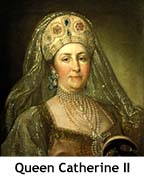 Under Catherine the Great, Russia's political control was extended to cover the Polish - Lithuanian Commonwealth, and a war was waged that completely decayed the Ottoman Empire, thus advancing Russia's southern boundary to the Black Sea. In the early 19th century, Nicholas I succeeded the throne, only to be confronted by an uprising; conflicting views from Peter the Great's order of action to westernize Russia garnered widely varied opinions on whether to imitate Europe or return to the traditions of the past. Despite the civil dispute, Russia was ultimately pressured into the involvement of European affairs as part of the "Holy Alliance." After the death of Tsar Nicholas, Russia became involved in a series of wars, including the Crimean War (1853) and the Russo-Turkish War (1877).
Under Catherine the Great, Russia's political control was extended to cover the Polish - Lithuanian Commonwealth, and a war was waged that completely decayed the Ottoman Empire, thus advancing Russia's southern boundary to the Black Sea. In the early 19th century, Nicholas I succeeded the throne, only to be confronted by an uprising; conflicting views from Peter the Great's order of action to westernize Russia garnered widely varied opinions on whether to imitate Europe or return to the traditions of the past. Despite the civil dispute, Russia was ultimately pressured into the involvement of European affairs as part of the "Holy Alliance." After the death of Tsar Nicholas, Russia became involved in a series of wars, including the Crimean War (1853) and the Russo-Turkish War (1877). 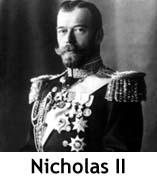 In the midst of the Industrial Revolution, one that significantly influenced the country, Nicholas II gained control of Russia, and opposition forces began to organize into competing parties. As World War I reared its ugly head in the early 20th century, Russia, bound by treaty, entered the war at the defense of Serbia. The impact of the war crippled Russia, as food and fuel grew short in supply, casualties amassed, and inflation grew steadily.In 1903, Vladimir Lenin and Alexander Bogdanov founded the Bolsheviks (a mass organization of workers who believed in the principle of democratic centralism) and under the leadership of Lenin, the Bolsheviks sought to overthrow the Tsar.By early 1917, Russia was nearing a total collapse, and on March 15, Nicholas II abdicated the throne. Desperately wanting to exile to the United Kingdom, Nicholas II and his family were instead forced to evacuate to Tobolsk in the Ural Mountains. Sadly, the Romanov family - Nicholas II, his wife and their five children (including Anastasia) - were executed on July 17, 1918 by the command of Bolshevik officer Yakov Yurovsky.Soviet RulingUnder Soviet ruling, the Marxist theory formed the basis of life, as the government promoted atheism and materialism; in addition, the patriarchal domination of family became severely weakened. Women flooded the labor market, and young girls were encouraged to maintain their education and pursue careers. Joseph Stalin established almost complete control of the Russian society by 1929, and following Lenin's death attempted to secure his status. The first of a number of plans known as the Five-Year Plan, proposed by Stalin, set Russia up to be the first ever government to control all economic activity. In the span of just a few years, nearly one million peasants were forced off their land, and Russian cities became over-saturated with industrial workers. During World War II, the Soviet Union aligned with the Allied Powers, and, although victorious, in the war's aftermath the Soviet economy struggled to regain its composure. Further adding to the troubles, the Cold War emerged during the summer of 1945, after a conflict between Stalin and U.S.President Harry Truman over the future of eastern Europe.
In the midst of the Industrial Revolution, one that significantly influenced the country, Nicholas II gained control of Russia, and opposition forces began to organize into competing parties. As World War I reared its ugly head in the early 20th century, Russia, bound by treaty, entered the war at the defense of Serbia. The impact of the war crippled Russia, as food and fuel grew short in supply, casualties amassed, and inflation grew steadily.In 1903, Vladimir Lenin and Alexander Bogdanov founded the Bolsheviks (a mass organization of workers who believed in the principle of democratic centralism) and under the leadership of Lenin, the Bolsheviks sought to overthrow the Tsar.By early 1917, Russia was nearing a total collapse, and on March 15, Nicholas II abdicated the throne. Desperately wanting to exile to the United Kingdom, Nicholas II and his family were instead forced to evacuate to Tobolsk in the Ural Mountains. Sadly, the Romanov family - Nicholas II, his wife and their five children (including Anastasia) - were executed on July 17, 1918 by the command of Bolshevik officer Yakov Yurovsky.Soviet RulingUnder Soviet ruling, the Marxist theory formed the basis of life, as the government promoted atheism and materialism; in addition, the patriarchal domination of family became severely weakened. Women flooded the labor market, and young girls were encouraged to maintain their education and pursue careers. Joseph Stalin established almost complete control of the Russian society by 1929, and following Lenin's death attempted to secure his status. The first of a number of plans known as the Five-Year Plan, proposed by Stalin, set Russia up to be the first ever government to control all economic activity. In the span of just a few years, nearly one million peasants were forced off their land, and Russian cities became over-saturated with industrial workers. During World War II, the Soviet Union aligned with the Allied Powers, and, although victorious, in the war's aftermath the Soviet economy struggled to regain its composure. Further adding to the troubles, the Cold War emerged during the summer of 1945, after a conflict between Stalin and U.S.President Harry Truman over the future of eastern Europe. 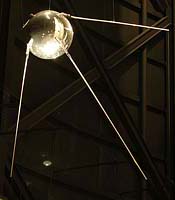 The USSR pioneered the Space Age with the launch of the world's first artificial satellite, Sputnik 1, and on April 12, 1961, Yuri Gagarin became the first human to orbit Earth. Despite showcasing some of the most significant technological achievements of the 20th century, in 1991 the USSR dissolved, and when that union ended, Russia itself and its former republics all became separate countries. The first direct presidential election in Russian history was held in June 1991, with Boris Yeltsin being the victor; in addition, Russia's economy shifted following the breakup of the USSR, causing a major crisis. Today, this super-sized country is led by President Vladimir V. Putin, as he attempts to manage this massive slice of real estate, as well as maintain positive relationships with bothAsian, European and Western powers - and what a job he has!
The USSR pioneered the Space Age with the launch of the world's first artificial satellite, Sputnik 1, and on April 12, 1961, Yuri Gagarin became the first human to orbit Earth. Despite showcasing some of the most significant technological achievements of the 20th century, in 1991 the USSR dissolved, and when that union ended, Russia itself and its former republics all became separate countries. The first direct presidential election in Russian history was held in June 1991, with Boris Yeltsin being the victor; in addition, Russia's economy shifted following the breakup of the USSR, causing a major crisis. Today, this super-sized country is led by President Vladimir V. Putin, as he attempts to manage this massive slice of real estate, as well as maintain positive relationships with bothAsian, European and Western powers - and what a job he has!
Greenland (about 80% ice covered) is the world's largest (non-continent) island, and it dominates the North Atlantic Ocean between North America and Europe It is geographically considered part of the North American continent. Its sparse population is confined to small settlements along the coastlines, with nearly one-quarter of the population living in the capital city of Nuuk. The culture of Greenland has much in common with Inuit traditions, as the majority of people are descended from those indigenous peoples that inhabit the Arctic regions. People in Greenland today continue the Inuit tradition of ice-fishing and there are annual dog-sled races, however, fishing and hunting by traditional methods has been increasingly replaced by the use of firearms and modern technology. First explored by the Vikings, and named by Erik the Red (982-985), this isolated land was initially settled by hardy souls from the nearby island of Iceland. Later, his son, Leif Erickson, returned to Greenland from Norway, and development continued... Subsequently claimed by Denmark in 1380, Danish colonization began in the 18th century, and Greenland was made an integral part of Denmark in 1953. It joined the European Community (now the EU) with Denmark in 1973 but withdrew in 1985 over a dispute centered on stringent fishing quotas. Greenland was granted self-government in 1979 by the Danish parliament; the law went into effect the following year. Greenland voted in favor of increased self-rule in November 2008 and acquired greater responsibility for internal affairs in June 2009. Denmark, however, continues to exercise control of Greenland's foreign affairs, security, and financial policy in consultation with Greenland's Home Rule Government. So, Greenland is still considered a part of Denmark, and not recognized as an official independent country. In fact, it's a constituent country; a country that remains a part of another entity, such as a sovereign state. In this case, the country ofDenmark Greenland's economy remains critically dependent on exports of shrimp and fish and on a substantial subsidy - about $650 million in 2009 - from the Danish Government, which supplies nearly 60% of government revenues. Greenland for some is a tourism mecca as it offers unlimited spaces and challenges for anglers, hikers, kayakers and mountain climbers. In addition, dramatic glaciers are easily discovered.
This land of volcanic eruptions and devastating earthquakes was occupied by indigenous Indian factions as early as 1500 BC, and the remains of their civilizations are strewn across the land. The Spanish arrived in 1524 and the native tribes aggressively fought back; those invaders retreated, but they returned the next year and the locals were simply overpowered by Spanish military weapons. By mid-century the city of San Salvador was up and running and the district of El Salvador were under the control of the SpanishKingdom of Guatemala. Over time the Spanish colonial system flourished here, and quite typically of all regional colonies, the indigenous Indian population was stripped of their land, and through abuse and repression were relegated to a rural, lower-class status. After the overthrow of the Spanish King by Napoleon, El Salvador and others declared their independence from Spain in 1821. Then, El Salvador, as well as Costa Rica, Guatemala,Honduras and Nicaragua formed the United Provinces of Central America, but that federation quickly dissolved, and El Salvador became an independent republic in 1838. Across the Americas, all of the new independent states experienced power grabs (revolutions), mostly fed by land-greed and for control of natural resources; El Salvador was no exception. Serious problems began in 1932 with a coup, and for most of the remaining 20th century, El Salvador totally unraveled; its people suffered through decades of military rule, out-of-control death squads and the bloodshed of a 12-year civil war that all but destroyed the country.  That civil war finally ended, but then Hurricane Mitch paid a surprise visit in 1998; widespread flooding and landslides were the result, infrastructure was washed away, hundreds died, and over 50,000 Salvadorans were rendered homeless. To make matters worse, on Saturday, January 13, 2001, a 7.69 earthquake struck; more than 1,000 died, and hundreds of thousands were left homeless. Today, the cost of rebuilding has now surpassed 3.5 billion dollars. The small country of El Salvador is certainly a work in progress. On the positive side, and over the last ten years, the country has instigated a strong move toward democracy, countrywide modernization, and a greatly improved tourism industry.
That civil war finally ended, but then Hurricane Mitch paid a surprise visit in 1998; widespread flooding and landslides were the result, infrastructure was washed away, hundreds died, and over 50,000 Salvadorans were rendered homeless. To make matters worse, on Saturday, January 13, 2001, a 7.69 earthquake struck; more than 1,000 died, and hundreds of thousands were left homeless. Today, the cost of rebuilding has now surpassed 3.5 billion dollars. The small country of El Salvador is certainly a work in progress. On the positive side, and over the last ten years, the country has instigated a strong move toward democracy, countrywide modernization, and a greatly improved tourism industry.
Named after the Senegal River, the Republic of Senegal has been inhabited since the Paleolithic era.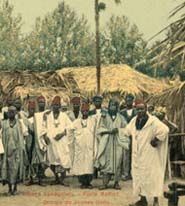 Senegal was ruled by various kingdoms in the years following, including the Takrur Kingdom in the 9th century and the Jolofs during the 13th-14th centuries. Portuguese explorers ventured along the African coast during the 15th century, but did not permanently settle - rather they made use of the land as a spot for trade. Trade in Africa -and more commonly, slave trade- heightened amongst Europe and the rest of the western world in the 17th century. France began to expand into Senegal during the 1850s, and they remained until the country gained independence in 1960. The Socialist Party then ruled Senegal 40 years. Senegal joined with The Gambia to form the nominal confederation of Senegambia in 1982, but the envisaged integration of the two countries was never carried out, and the union was dissolved in 1989. A southern separatist group sporadically has clashed with government forces since 1982, but Senegal remains one of the most stable democracies in Africa.
Senegal was ruled by various kingdoms in the years following, including the Takrur Kingdom in the 9th century and the Jolofs during the 13th-14th centuries. Portuguese explorers ventured along the African coast during the 15th century, but did not permanently settle - rather they made use of the land as a spot for trade. Trade in Africa -and more commonly, slave trade- heightened amongst Europe and the rest of the western world in the 17th century. France began to expand into Senegal during the 1850s, and they remained until the country gained independence in 1960. The Socialist Party then ruled Senegal 40 years. Senegal joined with The Gambia to form the nominal confederation of Senegambia in 1982, but the envisaged integration of the two countries was never carried out, and the union was dissolved in 1989. A southern separatist group sporadically has clashed with government forces since 1982, but Senegal remains one of the most stable democracies in Africa. 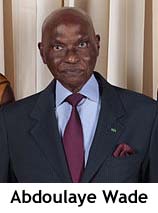 In 2000, Abdoulaye Wade was elected president, and then re-elected in 2007 for a five-year term. Following Wade's second term, Macky Sall, a long-standing member of the Senegalese Democratic Party (PDS), won the 2012 presidential elections. In September of that same year, a vote by lawmakers was put forth to do away with the senate in order to save an estimated $15 million.Senegal has one of the fastest growing economies in the world, due to a reform program in 1994 that began with a 50% devaluation of the currency, the CFA franc in addition to the dismantling of government price controls and subsides. Senegal's main industries are in manufacturing: food processing, fertilizers, chemicals and textiles. The country has a long history of participating in international peacekeeping.
In 2000, Abdoulaye Wade was elected president, and then re-elected in 2007 for a five-year term. Following Wade's second term, Macky Sall, a long-standing member of the Senegalese Democratic Party (PDS), won the 2012 presidential elections. In September of that same year, a vote by lawmakers was put forth to do away with the senate in order to save an estimated $15 million.Senegal has one of the fastest growing economies in the world, due to a reform program in 1994 that began with a 50% devaluation of the currency, the CFA franc in addition to the dismantling of government price controls and subsides. Senegal's main industries are in manufacturing: food processing, fertilizers, chemicals and textiles. The country has a long history of participating in international peacekeeping.
The history of Eritrea can be traced back to ancient Egyptian times, as the ancient Puntites who dominated the land had close ties with Pharaoh Sahure and Queen Hatshepsut. The Aksumite Kingdom rose to power during the 1st century AD, followed by South Arabians, Ottoman Turks, thePortuguese, the Egyptians, theBritish, and finally the Italians in the 19th century. European powers rushed Africa after the opening of the Suez Canal in 1869, and on January 1, 1890, Eritrea became an official colony of Italy. The Italians were driven out by the British through the Battle of Keren in 1941, and subsequently adminstered until 1951. Eritrea was awarded to Ethiopia in 1952 as part of a federation under a UN Mandate. Ethiopia's annexation of Eritrea as a province 10 years later sparked a 30-year struggle for independence that ended in 1991 with Eritrean rebels defeating governmental forces; independence was overwhelmingly approved in a 1993 referendum. 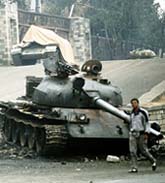 A border war with Ethiopia that erupted in 1998 ended under UN auspices in December 2000. Eritrea currently hosts UN peacekeeping operations that monitor a 15-mile (25 km) wide Temporary Security Zone on the border with Ethiopia. An international commission, organized to resolve the border dispute, posted their findings in 2002; however, its final demarcation is on hold due to Ethiopian objections.These days, border conflicts contiue between both Djiboutiand Ethiopia. In 2008, a call for the UN to terminate its peacekeeping mission and a conflict between Djiboutiantroops and Eritrea errupted, and the country's immediate future remains uncertain as time goes on.
A border war with Ethiopia that erupted in 1998 ended under UN auspices in December 2000. Eritrea currently hosts UN peacekeeping operations that monitor a 15-mile (25 km) wide Temporary Security Zone on the border with Ethiopia. An international commission, organized to resolve the border dispute, posted their findings in 2002; however, its final demarcation is on hold due to Ethiopian objections.These days, border conflicts contiue between both Djiboutiand Ethiopia. In 2008, a call for the UN to terminate its peacekeeping mission and a conflict between Djiboutiantroops and Eritrea errupted, and the country's immediate future remains uncertain as time goes on.
Monaco, an ancient principality, covers about two square miles, and has been ruled since the 14th century by the Grimaldi family. 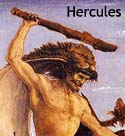 Legend has it that, during ancient times, Hercules made his way through the area of present-day Monaco, and diverted the former gods. Prompting the citizens to build the temple of Hercules Monoikos in his honor. As Spanish forces closed in on Monaco during the 1630s, Prince Honore II requested the help of France, which subsequently put the princes and Monaco as a vassal of the French Kings. The Princes of Monaco, as well as their families, thereafter spent a majority of their lives in Paris, and ultimately shifted the once Italian House of Grimaldi's to a predominantly Frenchbackground. Monaco remained dependent upon France until the Great Revolution, and then in 1793 soldiers of the French Revolution seized the country placing it completely under the French command. Monaco didn't regain control of their land until 1814, but upon re-establishment the Congress of Vienna designated the principality a dependency of the Kingdom of Sardinia. This was short lived, however, and by 1860 the country of Monaco found themselves under the protection of France once again as a vassal state. In 1863 the Monte Carlo casino was built, and the residents of Monaco were able to enjoy the luxury of not having to pay any taxes; a privilege made possible by the success of the casino. As World War II raged in the early 1940's, the Italian army invaded Monaco bringing with them a Fascist administration. Then, in 1943 after the fall of Mussolini in Italy, the Nazi forces ofGermany were quick to occupy Monaco, and began deporting the Jewish population to concentration camps. Following World War II, German troops retreated, and Prince Rainier III took the throne following the death of Prince Louis II.
Legend has it that, during ancient times, Hercules made his way through the area of present-day Monaco, and diverted the former gods. Prompting the citizens to build the temple of Hercules Monoikos in his honor. As Spanish forces closed in on Monaco during the 1630s, Prince Honore II requested the help of France, which subsequently put the princes and Monaco as a vassal of the French Kings. The Princes of Monaco, as well as their families, thereafter spent a majority of their lives in Paris, and ultimately shifted the once Italian House of Grimaldi's to a predominantly Frenchbackground. Monaco remained dependent upon France until the Great Revolution, and then in 1793 soldiers of the French Revolution seized the country placing it completely under the French command. Monaco didn't regain control of their land until 1814, but upon re-establishment the Congress of Vienna designated the principality a dependency of the Kingdom of Sardinia. This was short lived, however, and by 1860 the country of Monaco found themselves under the protection of France once again as a vassal state. In 1863 the Monte Carlo casino was built, and the residents of Monaco were able to enjoy the luxury of not having to pay any taxes; a privilege made possible by the success of the casino. As World War II raged in the early 1940's, the Italian army invaded Monaco bringing with them a Fascist administration. Then, in 1943 after the fall of Mussolini in Italy, the Nazi forces ofGermany were quick to occupy Monaco, and began deporting the Jewish population to concentration camps. Following World War II, German troops retreated, and Prince Rainier III took the throne following the death of Prince Louis II.  Most notably, Prince Ranier marriedAmerican actress Grace Kelly in April of 1956, and the small country of Monaco gained the world's attention through widely televised coverage of the wedding. A turning point occurred with the revised Constitution of Monaco in 1962 as capital punishment was abolished, a Supreme Court established, and women were given the right to vote; by 1993, Monaco was a member of the United Nations. A treaty was negotiated between Monaco and France in 2002, clarifying that France would not annex Monaco if there were to come a day that there were no Grimaldi heirs to carry on the dynasty. After a reign of 56 years, on April 6, 2005, at the age of 81, Prince Rainier III died, and following his father's death, Prince Albert assumed the princely crown. Widely known for being home to the glittering Monte Carlo Casino and Grand Prix racing, Monaco also offers attractive scenery and a mild climate, making it a world famous tourist destination.
Most notably, Prince Ranier marriedAmerican actress Grace Kelly in April of 1956, and the small country of Monaco gained the world's attention through widely televised coverage of the wedding. A turning point occurred with the revised Constitution of Monaco in 1962 as capital punishment was abolished, a Supreme Court established, and women were given the right to vote; by 1993, Monaco was a member of the United Nations. A treaty was negotiated between Monaco and France in 2002, clarifying that France would not annex Monaco if there were to come a day that there were no Grimaldi heirs to carry on the dynasty. After a reign of 56 years, on April 6, 2005, at the age of 81, Prince Rainier III died, and following his father's death, Prince Albert assumed the princely crown. Widely known for being home to the glittering Monte Carlo Casino and Grand Prix racing, Monaco also offers attractive scenery and a mild climate, making it a world famous tourist destination.
 In fact, by jet from Moscow, it takes about eight hours to reach Vladivostok on the Pacific Oceancoast. If you were to take the trip on the Trans-Siberian Railroad, you can count on your journey taking at least 4 days minimum.
In fact, by jet from Moscow, it takes about eight hours to reach Vladivostok on the Pacific Oceancoast. If you were to take the trip on the Trans-Siberian Railroad, you can count on your journey taking at least 4 days minimum.  Historically, Russia was occupied by Mongols, and the likes, for centuries. Early Russian ancestors belonged to Slavic tribes, and by the mid-9th century vikings arrived. The vikings moved across the vast landscape, utilizing the many waterways, and maintained trade along the way.
Historically, Russia was occupied by Mongols, and the likes, for centuries. Early Russian ancestors belonged to Slavic tribes, and by the mid-9th century vikings arrived. The vikings moved across the vast landscape, utilizing the many waterways, and maintained trade along the way.  The Mongols began to falter by the middle of the 14th century, and, upon their eventual collapse, Moscow's leadership began to expand outward. The influence of the Mongols in terms of military tactics and transportation remained with the Russian peoples, and in the 15th century Ivan III (Ivan the Great) organized the foundation for a Russian national state.
The Mongols began to falter by the middle of the 14th century, and, upon their eventual collapse, Moscow's leadership began to expand outward. The influence of the Mongols in terms of military tactics and transportation remained with the Russian peoples, and in the 15th century Ivan III (Ivan the Great) organized the foundation for a Russian national state.  Under Catherine the Great, Russia's political control was extended to cover the Polish - Lithuanian Commonwealth, and a war was waged that completely decayed the Ottoman Empire, thus advancing Russia's southern boundary to the Black Sea.
Under Catherine the Great, Russia's political control was extended to cover the Polish - Lithuanian Commonwealth, and a war was waged that completely decayed the Ottoman Empire, thus advancing Russia's southern boundary to the Black Sea.  In the midst of the Industrial Revolution, one that significantly influenced the country, Nicholas II gained control of Russia, and opposition forces began to organize into competing parties.
In the midst of the Industrial Revolution, one that significantly influenced the country, Nicholas II gained control of Russia, and opposition forces began to organize into competing parties.  The USSR pioneered the Space Age with the launch of the world's first artificial satellite, Sputnik 1, and on April 12, 1961, Yuri Gagarin became the first human to orbit Earth.
The USSR pioneered the Space Age with the launch of the world's first artificial satellite, Sputnik 1, and on April 12, 1961, Yuri Gagarin became the first human to orbit Earth. 




